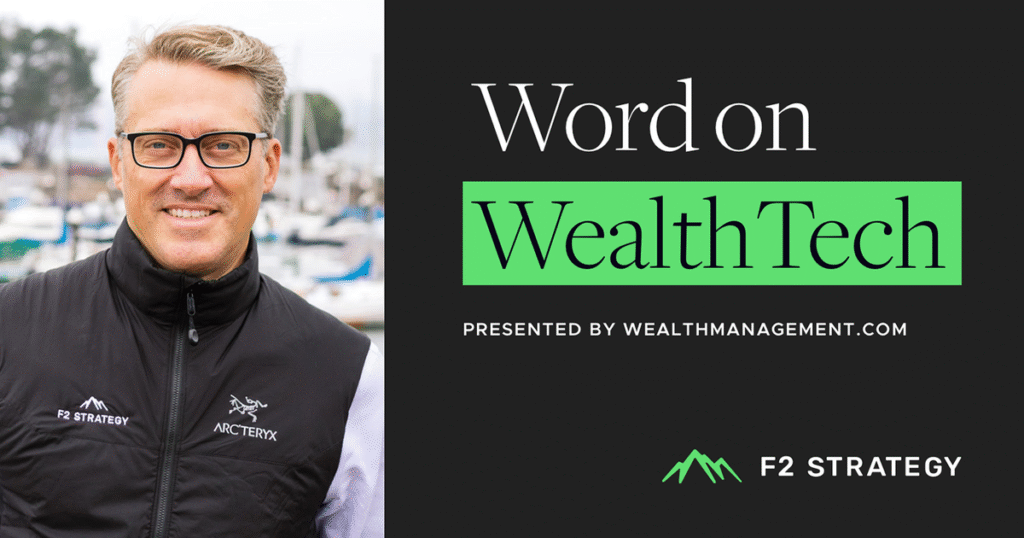September was big. A lot of members of our industry gathered in a lot of places on both coasts, and it was great to see the energy live. We’ve pulled together five wealthtech headlines this month that require a little deeper explanation, so bear with us as this is a slightly longer read than usual:
Technology continues to be a huge part of the Wealthies awards. After 11 years of entering and judging these awards, I think the entries that are excelling right now focus on growth, on the use of AI and helping advisors be more efficient and manage more client relationships. Encouraging people to promote what they’ve done and almost keeping an informal annual benchmark of who’s doing the best to move innovation forward in real life makes the Wealthies one of the most desired awards in the industry. This year’s location delivered space for more conversation and engagement from the finalists, which made it not just about celebrating but also connecting people at the pinnacle of innovation in our industry.
It’s rare for a technology to come to this space. For those of us who have been in the industry for a long time, we could smack ourselves in the forehead and say, “why didn’t I think of that!” TaxStatus established a data feed from the IRS that allows access to all the information the IRS knows about your clients’ assets and transactions that have anything to do with tax (which is almost everything). It’s a treasure trove of manageable or convertible assets for advisors that helps with estate planning or overall wallet share. Brilliant idea.
It’s still early as a company, so while they have strong leaders like Eric Clarke, Ric Edelman and Randy Bullard, we haven’t seen it in the wild yet. TaxStatus will also have to compete with some of the older aggregation platforms and find ways to make it ubiquitous—get it into the CRM, the reporting platform and estate planning tools. Until all those integrations are done, firms will require manual integration work, and that’s an additional cost.
This research appears to run counter to research we covered by Orion last month, where higher tech usage equated to more productive/faster-growing firms. Where Orion’s research indicates increased tech usage equates to practice growth, Kitces’ shows that tech usage does not directly increase the number of clients an advisor works with. What gives? Do these study results conflict?
The Kitces findings highlight a lack of direct scale and systemization for advisors using their growing tech stacks. Growth from these advisors comes from tech that deepens the client experience, expands services and increases referability, affinity and trust. Advisors aren’t using technology to hyper-scale their businesses at the expense of high-touch, high-trust experiences.
Orion’s analysis of a 2024 survey shows that advisors using their tools grew nearly 10% faster than those not using them. Far from a signal of impersonal, hyper-scaled operations, Orion’s technology automates the operations (and mostly non-client-facing) functions, allowing advisors to spend more time working with clients.
Both research findings point to the same place: advisors that win and grow do it by focusing on the things that matter to investors and offloading tasks that detract from them. It also prompts the question about how other tech/ops outsourced services such as TAMPs might help advisory businesses to grow better, not just faster.
In building out intelliflo, Invesco took some of the best European workflow practice management technology and coupled it with an efficient, multi-registration rebalancing technology called RedBlack and a client digital engagement tool. We’ll give them credit for the progress in integrating these things into something good, but by serving European and U.S. clients, it didn’t see as much growth in the U.S. as it should have. Upon acquiring intelliflo, Carlyle rebranded the U.S. side RedBlack and returned its U.S. focus, which is exciting because RedBlack was a strong competitor to Tamarac, Black Diamond, and other trading tools. It’s good to have competition. The downside is that we don’t know how much Redblack has kept up with U.S. advisor models for the last five years. The challenge is regaining credibility and proving that it has a product designed for a modern advisor that trades multi-registration complex portfolios.
Future Proof Festival this month drew the entire ecosystem of asset management firms, advisors and wealth technology and service providers to one place. That created almost infinite combinations of possible business interactions, which Future Proof facilitated with great content, entertainment and sponsors in a great venue and its “speed dating” breakout sessions. All of this accelerates the pace of connection and the progress of connecting all these entities. We think they’ve done a great job of creating a completely different experience than anything else that existed before it, but it also represents a large investment in time and in capital for people. For Matt Middleton and team to continue to be successful, they need to find ways to continue accelerating the business connection and the business generation. One thing we would love to see is more connection with people after the sessions.
We’re entering the fourth and final quarter of 2025. It will be interesting to see what projects firms prioritize as the year comes to a close.

